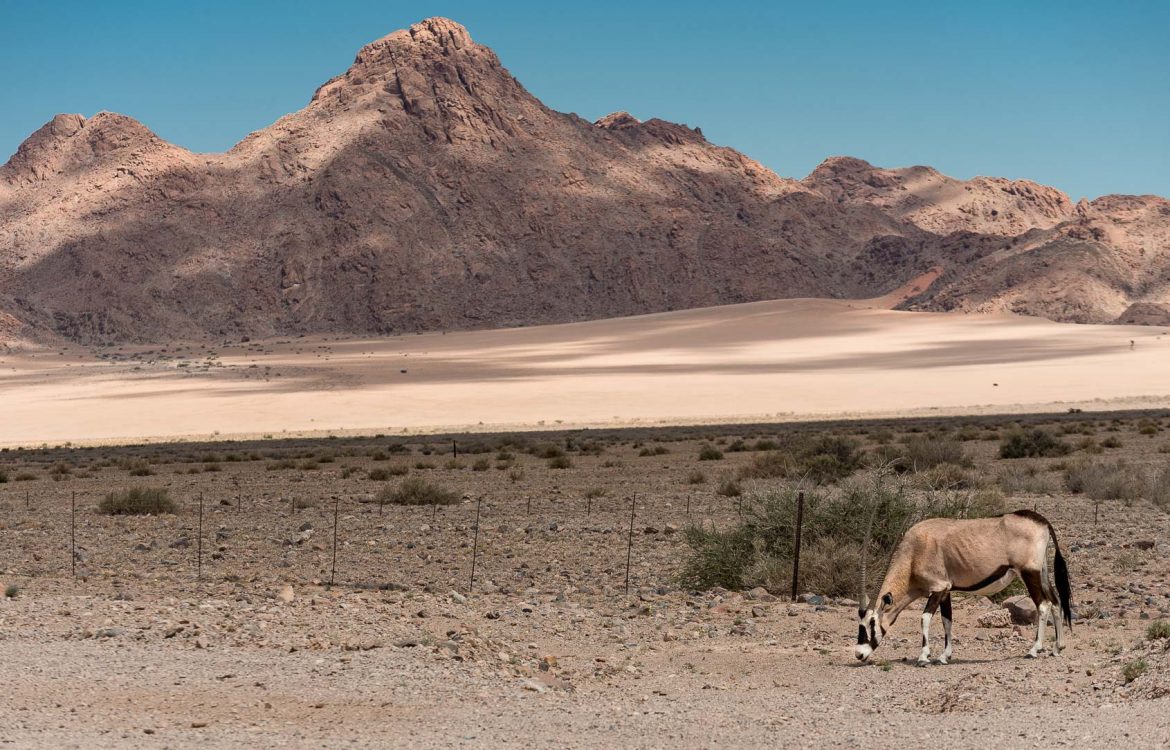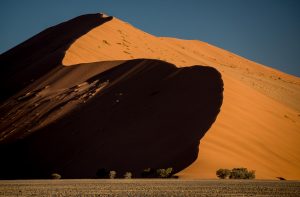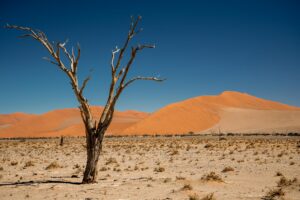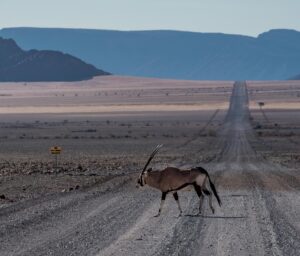
A Tale of Two Border Posts
Crossing the border from the Northern Cape of South Africa into Namibia turned out to be an illuminating experience. Stopping at the South African side of the border first, I was directed into a modern, air-conditioned facility where three immigration officers in sharp uniforms worked behind a plexiglass barrier. They each had flat-screen workstations with scanning devices and chip readers for electronic passports, all the latest and greatest tech. After looking over the rental documents for my truck, they stamped my passport and bid me happy travels.
I climbed back into my camper truck and drove the thirty or so meters of razor-wired no-man’s land to the Namibian side of the border post where it seemed a very different world. It suddenly felt like a ‘frontier’ in every sense of the word. Things seemed hot, kind of dusty and worn, like something out of an imaginary western.
After parking the truck, I found a small sign over a door that said ‘immigration.’ Inside one very weary looking woman in a sleeveless print dress sat behind an old laminate counter like something you might find in an old county courthouse. There was no air-conditioning nor was there a fan to move the stuffy mid-morning desert air around. Outside it was likely a toasty 97 degrees, 94 of which had made their way into this office. I scanned the surroundings but there wasn’t much else that imparted the usual severe officiousness of an immigration office—no plexiglass, no fancy devices, no one with badges and grim expressions. Just the one wilted-looking woman whose expression suggested a desire to be elsewhere. She stared at an older flat screen while maintaining an ‘I’m not to be messed with’ kind of look.
Now, it’s useful to remember that Namibia is a relative late-bloomer as a nation-state. It went from being a German colony until after the first world war when it ceded to South Africa where it unhappily remained before finally gaining its independence in 1989.
As I filled out the details on my immigration card, I noticed that on one wall of the office hung a framed print of the Namibian president, Dr. Hage Geingob, smartly dressed and smiling down at the proceedings. Even he seemed a bit wilted in the heat—the colors in the president’s printed portrait seemed to have faded from age, heat or perhaps both. I finished filling out the card and handed it to the woman behind the counter along with my passport. She reached up for them without taking her eyes from the flat screen. As she looked them over I tried to make small talk about, what else, the weather.
‘Mmm-mmm…’ she murmured with a weary indifference, not looking up from the papers in front of her. I wanted her to know I was on her side (it always seems good to have the immigration people on your side) and suggested that it might be a nice gesture for the Namibian government to provide a fan for her office.
‘There is no fan for anyone here,’ she replied, stonily, still not looking up. I nodded dumbly and then glanced over at the fading print of President Geingob beaming down at us.
‘I bet you HE has a fan,’ I suggested, after a moment, gesturing toward the good doctor’s portrait on the wall.
This one landed on its mark and I noticed the slightest hint of a smile on the woman’s face.
‘They ALWAYS get the fans,’ she said, vigorously stamping my passport and handing it back to me.
I thanked her and nodded in agreement. ‘Ain’t it the truth…’ I said as I headed out into the glare of southern Namibia.


